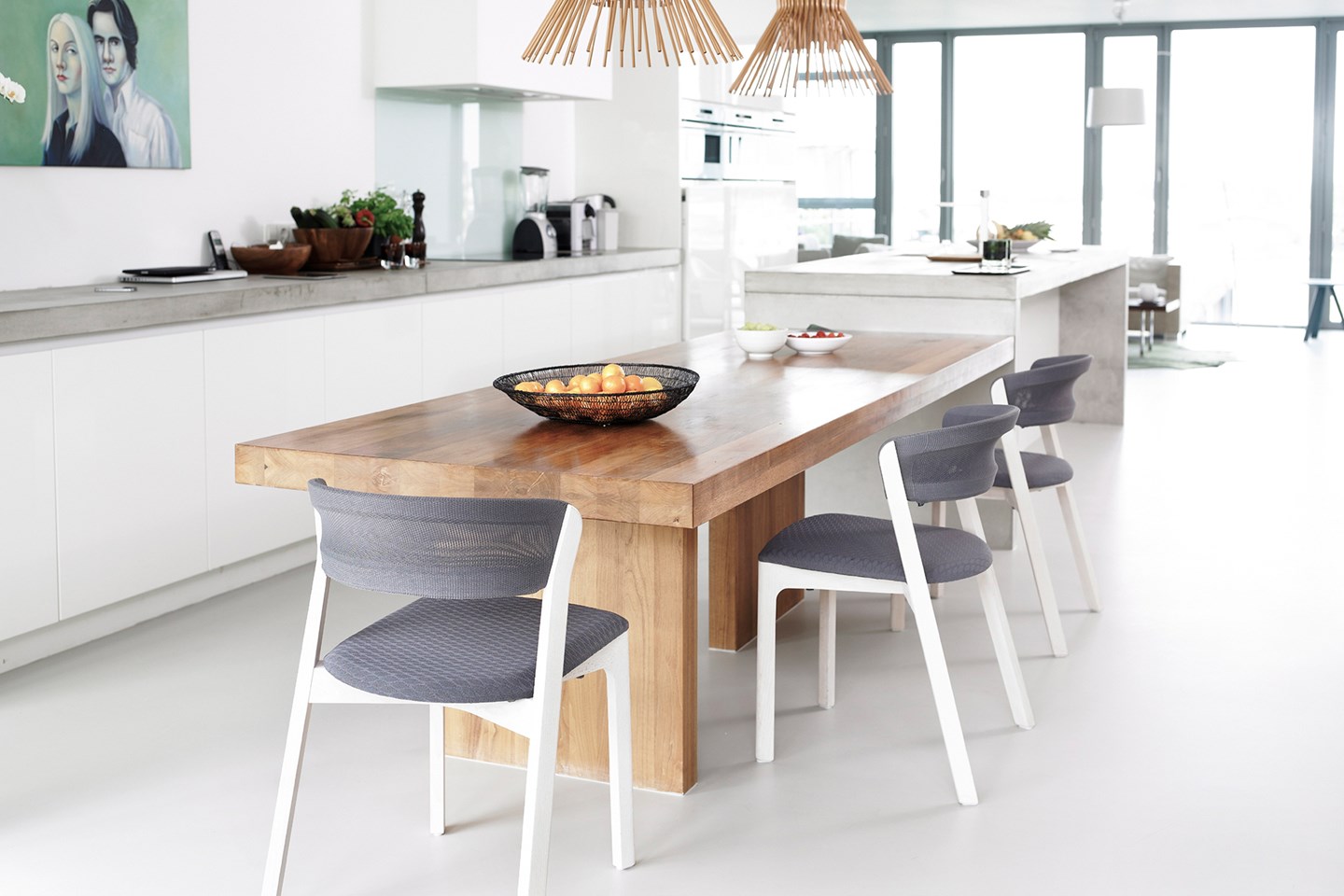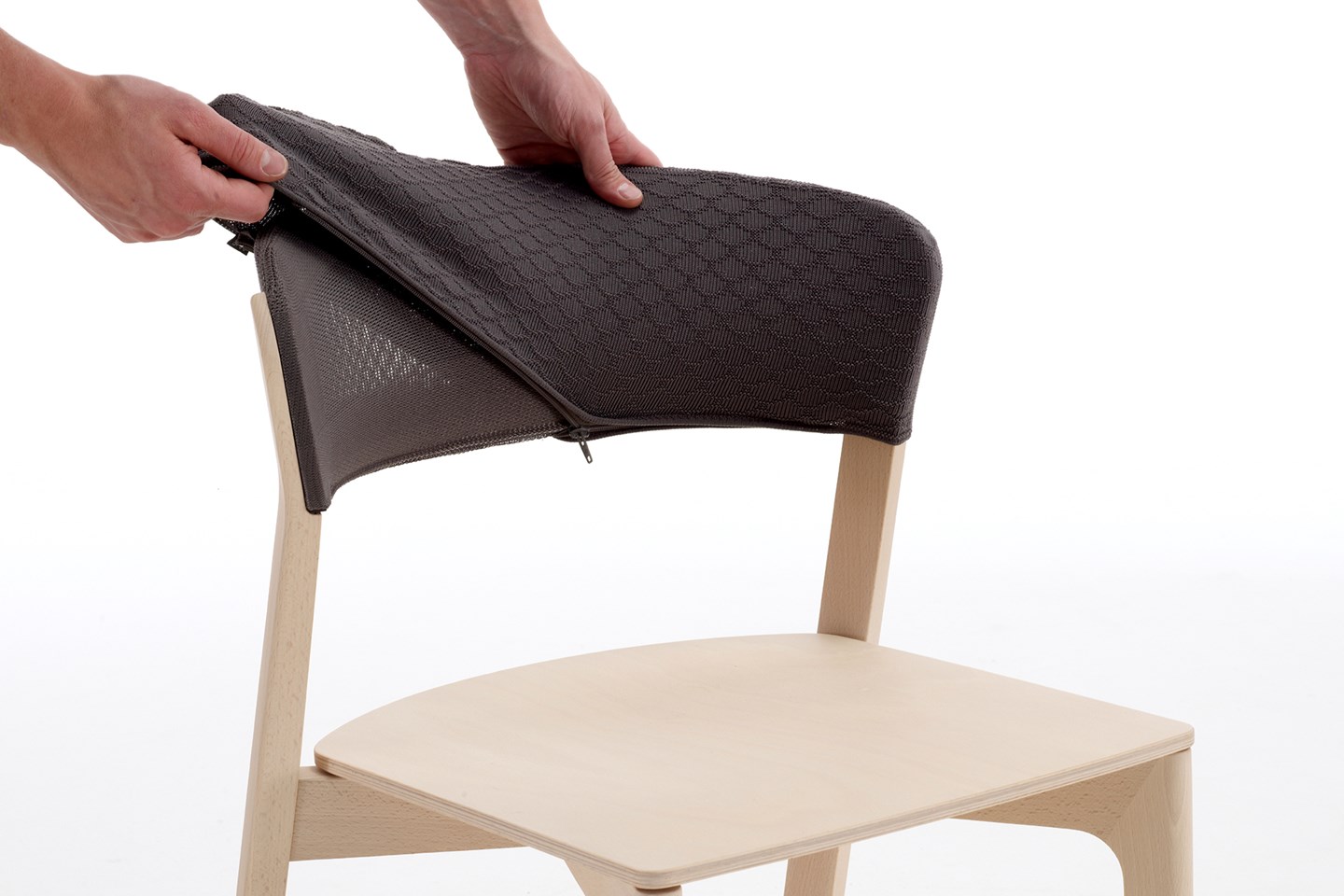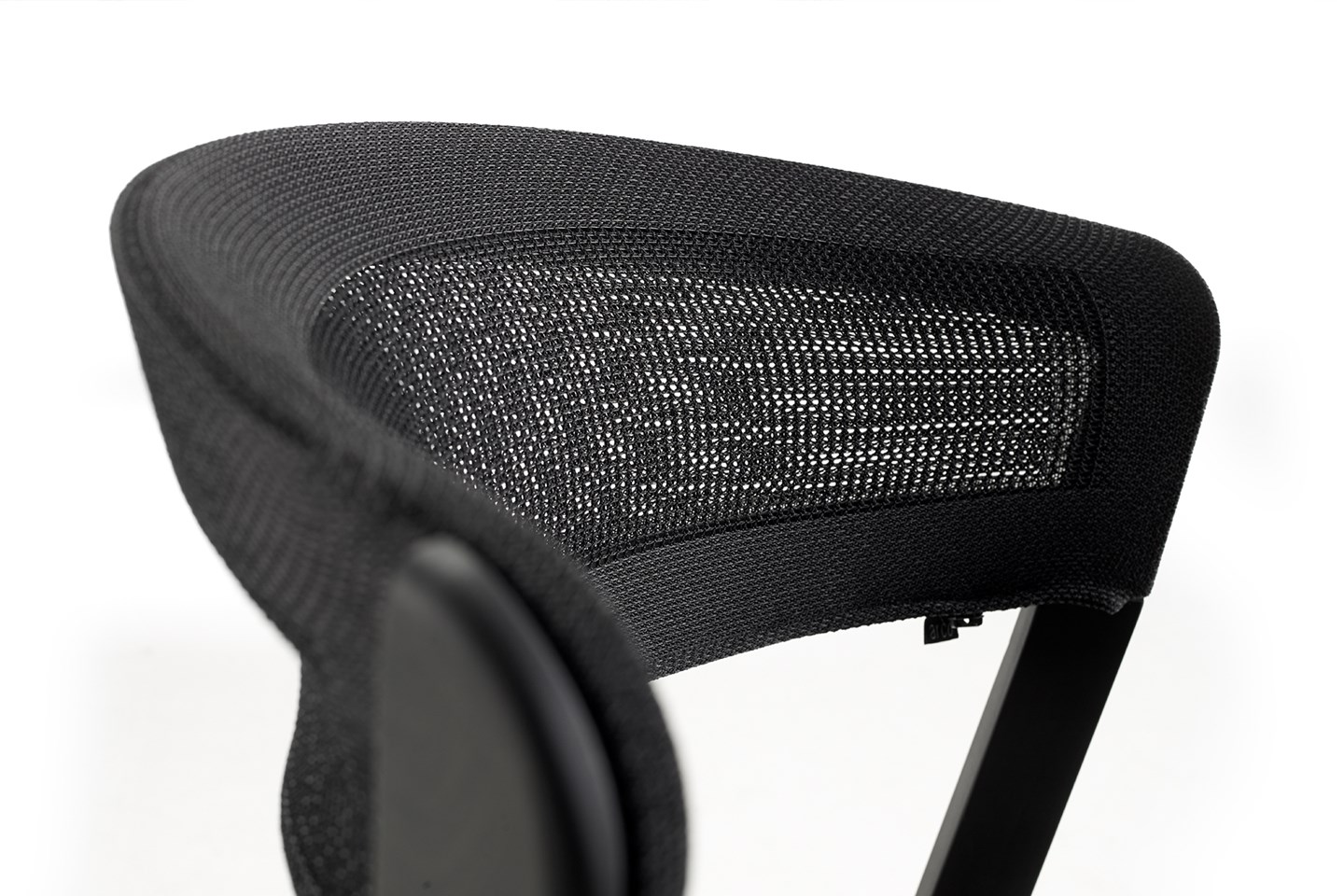Jonathan Prestwich
Englishman Jonathan Prestwich is not some unknown newcomer to the corridors of Arco. For years, well before setting up his own design studio in 2004, Prestwich had been working together with Burkhard Vogtherr, one of the renowned household names in Winterswijk. He was Vogtherr’s right-hand man and had already worked with him in that capacity on the development of a variety of Arco products.
When Jonathan and Jorre van Ast spoke for the first time about direct collaboration, it was nevertheless a new step. Both of them represent the next generation in Arco’s product development. That first discussion took place in a London pub, a not entirely a chance occurrence for two friends and a most appropriate one too. Arco had a clear assignment. They required an affordable, stackable, comfortable chair that would suit the hotel and catering trade as much as it would a private home environment.


Jonathan: "A new design project often starts off like that. The client has a specific wish and first of all you discuss it and get thinking about it in detail. I always try to find ways of creating things that are just that little bit better, more practical and functional than everything that’s already around. Pushing the limits a little farther each time. My starting point in this is the way we live: how people behave and precisely what the essence is of our contemporary lifestyle. New situations are constantly arising – just think about the prevalent use all the time, wherever you go, of laptops and palmtops – and as a designer you have to be in a position to design new items that are relevant, that dovetail perfectly with current lifestyles."
"Coming up with things that appeal to a certain type of use; it’s that that’s interesting and which makes for a meaningful point of departure for new designs. I want to make the sort of new furniture that makes people say 'Wow! I could really use something like that; I need this!'"
As soon became clear, the new Arco design was to be an attractive wooden chair. "That is the thing to do today; it’s what people want." The chair must be light in weight and, above all else, very comfortable. The final result – Prestwich’s design for the Café Chair – was honoured by the German Design Council with the 2011 Interior Innovation Award immediately after the chair’s introduction. The backrest made from a 3D knitted fabric provides most welcome comfort, restricts its weight and is responsible for a characteristic allure. Moreover, placing your elbows on the curved armrests makes it ideal when using your PC.
Over the years, Prestwich has specialised in designing furniture, seating in particular. "It went that way more or less by accident, and the more often you keep doing something, the better you get at it each time. You’re constantly involved with it and get more and better ideas." But designing chairs is also exacting and very demanding. "There are many possibilities, but you can also make a lot of mistakes. There needs to be a good balance between a large number of factors: aesthetics, comfort, ergonomics, cost, manufacturing options, materials.... This results in interesting challenges – I prefer not to call them problems or compromises." Thus the knitted back support for the Café Chair was a deft solution for a construction that had to be as lightweight as it was strong. "Ultimately, heavyweight people have to be able to sit on the chair as well, and people aren’t all that gentle with furniture in the hotel and catering business."


One of the greatest challenges that Prestwich encounters in his profession is that of the price level for the end result: how to create a design that will be of commercial interest. "Naturally you can create amazing furniture, but it also needs to have the right price label attached. And that’s quite a problem nowadays amid global competition. You don’t want to make concessions to quality." He feels that it is vitally important for Europe to retain its professional expertise and manufacturing craftsmanship, because: "if we let go of that, it’ll be virtually impossible to rebuild."
Prestwich cites natural phenomena as his major source of inspiration. "Simply look, say, at the make-up of a flower. It opens in sunlight, attracts bees to its pistil and stamen, only to close again at night for protection. It works perfectly! So right, so beautiful and sophisticated. We’re still unable to copy it.
In reality, we’re all of us still in the Stone Age working with primitive techniques. Perhaps one day we’ll be able to grow genetically modified trees that bear the perfect chairs as fruit."